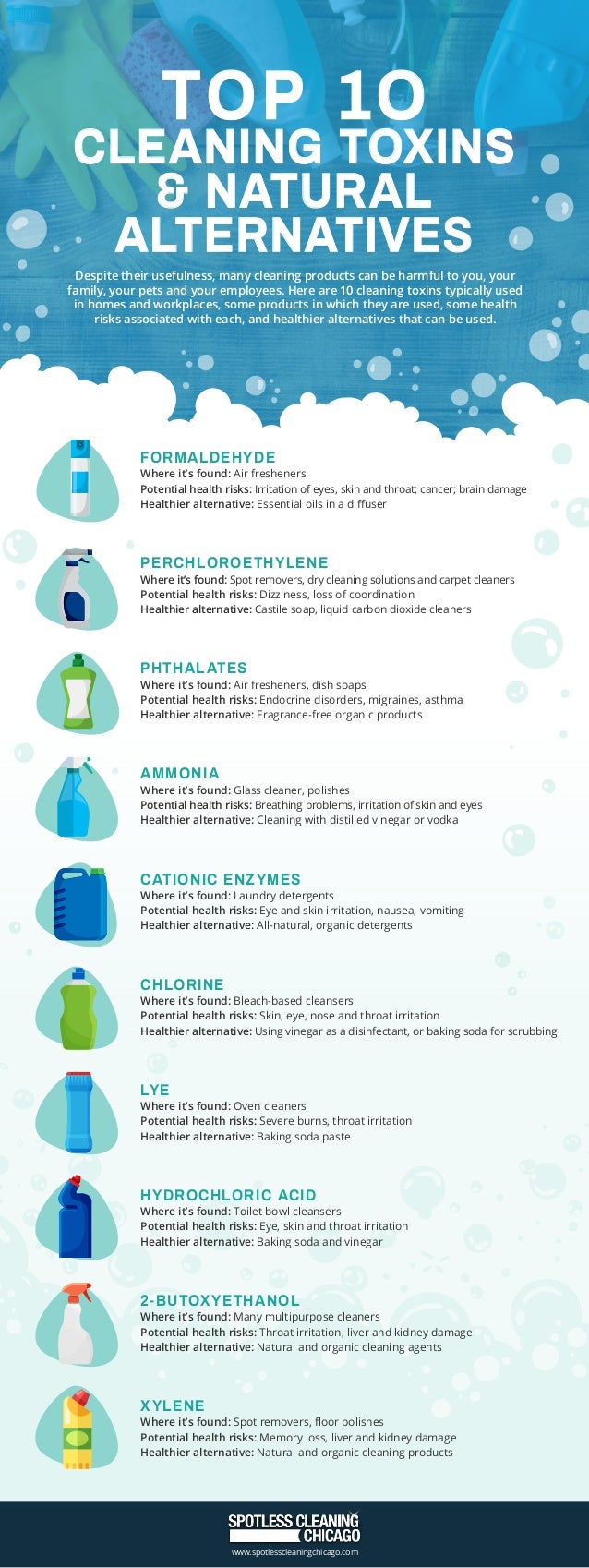Have your eyes, nose or throat ever felt aggravated after you’ve cleaned your kitchen or bathroom? Many common everyday cleaning products, such as disinfectant sprays and air fresheners, contain chemicals that are dangerous to human health and the environment. In some cases, combining the wrong household products together can form toxic gases that can exacerbate underlying health conditions, such as asthma. Luckily, you can still achieve a sparkling home with healthier alternatives. Here are some toxins that may be lurking in your cleaners and some natural replacements that can get the job done.
Ammonia is a hazardous chemical usually found in glass cleaner and polishes. Potential health risks related with ammonia include respiratory problems and irritation of the skin and eyes. Distilled vinegar and vodka are safer, all-natural disinfectant alternatives. Distilled vinegar can cut through grease and helps remove mildew from bathroom surfaces. Be sure never to mix vinegar or ammonia with bleach — the combination can create toxic vapors.
Lye, also known as sodium hydroxide, is a basic ingredient in oven and drain cleaners. It can be extremely damaging to both humans and the environment. If the corrosive chemical comes in contact with skin, it can cause severe burns. The strong irritant can also cause serious tissue damage if accidentally swallowed. For grimy ovens, a baking soda paste can be used as a natural cleaning substitution, although it may require a bit more elbow grease. Baking soda is non-toxic and safe to use around food surfaces.
To learn more about the top cleaning toxins and their natural alternatives, see the accompanying graphic.
Top 10 Cleaning Toxins & Natural Alternatives created by Spotless Cleaning Chicago, a provider of office cleaning in Chicago.






